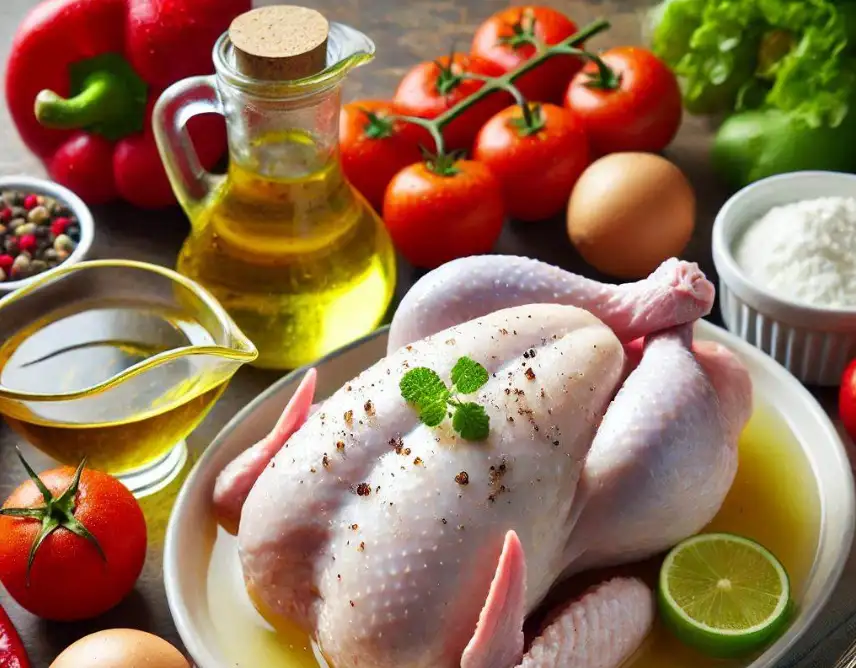Before cooking chicken, many home chefs struggle with the confusion surrounding whether it should be brought to room temperature. This uncertainty often leads to inconsistent results in flavor and texture. After understanding the science behind even cooking and the importance of preparation, it becomes clear that proper techniques make all the difference. Let’s bridge the gap between confusion and confidence as we explore this topic step by step.
Should Chicken Be Room Temperature Before Cooking?
Yes, letting chicken come to room temperature (typically for 30 minutes to 1 hour) before cooking can significantly improve the cooking process. When chicken is allowed to warm slightly, it cooks more evenly. Cold chicken straight from the refrigerator can cause the outer layers to overcook and dry out while the center struggles to reach the desired temperature.
However, it is essential to limit the time chicken spends at room temperature to no more than 2 hours (or 1 hour if the room temperature is above 32°C/90°F). Beyond this, the risk of bacterial growth increases, which can lead to foodborne illnesses.
Safety Considerations
Food safety is paramount when handling raw chicken. According to USDA guidelines:
- Chicken should not remain in the “danger zone” (between 4°C/40°F and 60°C/140°F) for more than 2 hours.
- Always cook chicken to an internal temperature of 165°F (74°C) to kill harmful bacteria like Salmonella or Campylobacter.
- If marinating, refrigerate the chicken during this process unless you plan to cook it immediately after a short room-temperature marinade (e.g., 30-45 minutes).
Why Bring Chicken to Room Temperature?
- Even Cooking: Bringing chicken closer to room temperature helps reduce the temperature gradient between the surface and the center. This ensures the chicken cooks uniformly, preventing overcooking or drying out the exterior.
- Juicier Results: Cold chicken tends to release more juices as it cooks, leading to drier meat. Room-temperature chicken retains more moisture.
- Improved Texture: Warming the chicken slightly before cooking allows the proteins to relax, resulting in a tender texture.
- Better Browning: Chicken that’s closer to room temperature sears more effectively. When cold meat hits a hot pan, it lowers the temperature of the cooking surface, leading to uneven browning.
Practical Tips for Preparing Chicken
- Plan Ahead: Remove the chicken from the refrigerator about 30 minutes before cooking. Place it in a clean, covered container on the counter.
- Size Matters: For thick cuts like chicken breasts, consider pounding them to an even thickness or butterflying them for more uniform cooking.
- Marinate at Room Temperature: Short-term marinating (30-45 minutes) at room temperature is safe and helps the flavors absorb faster. For longer marinating, refrigerate the chicken.
- Use a Thermometer: Always verify the internal temperature reaches 165°F (74°C) to ensure food safety.
Does This Apply to All Cooking Methods?
Yes, whether you’re grilling, frying, roasting, or poaching, starting with chicken closer to room temperature can enhance the outcome. For frying, it’s especially beneficial as cold chicken can lower the temperature of the oil, leading to uneven cooking and greasier results.
Debunking Myths
- Chicken Should Never Be Room Temperature: While the USDA warns against leaving chicken out for too long, short periods at room temperature are safe when managed properly.
- Room Temperature Is Unsafe for All Meats: The approach varies by meat type. Chicken benefits from a shorter time at room temperature compared to beef or pork, but the principle of even cooking applies universally.
Takeaways for Perfect Chicken
- Limit the time chicken spends at room temperature to 30-60 minutes.
- Cook chicken to an internal temperature of 165°F (74°C) for safety.
- Use preparation techniques like pounding or butterflying to ensure even cooking.
- Let cooked chicken rest for 5 minutes to retain juices and enhance flavor.
By following these steps, you’ll achieve moist, tender, and flavorful chicken every time—while keeping food safety a top priority. Happy cooking!

